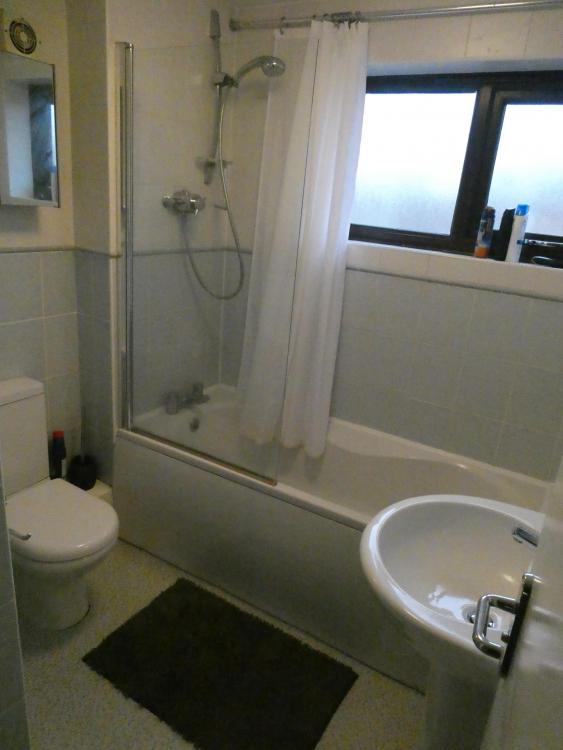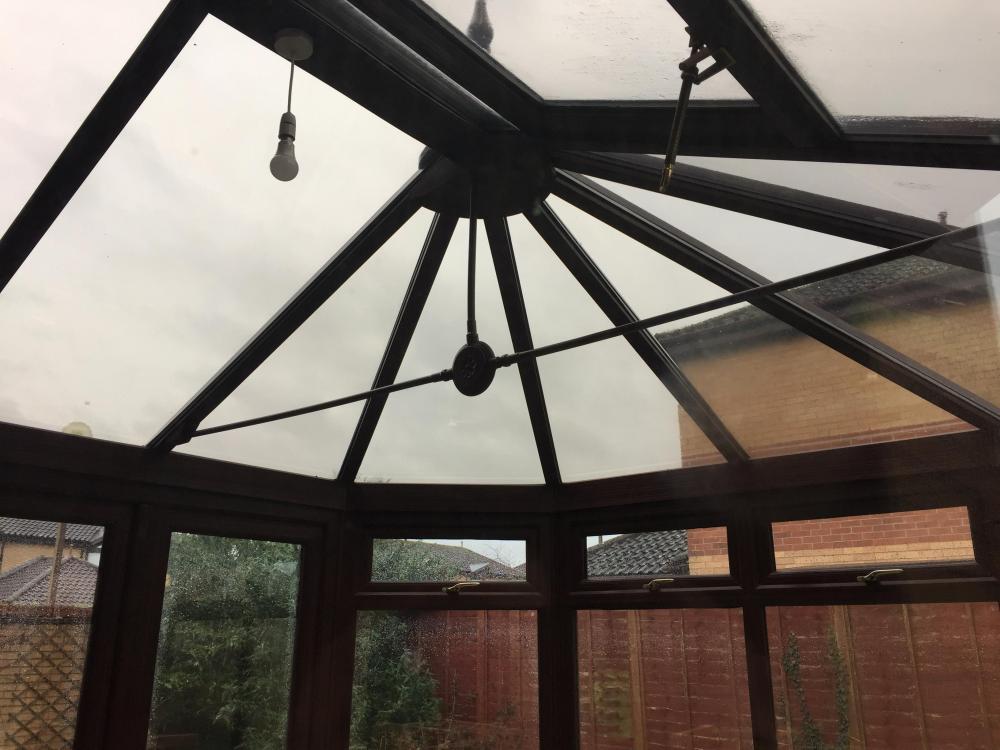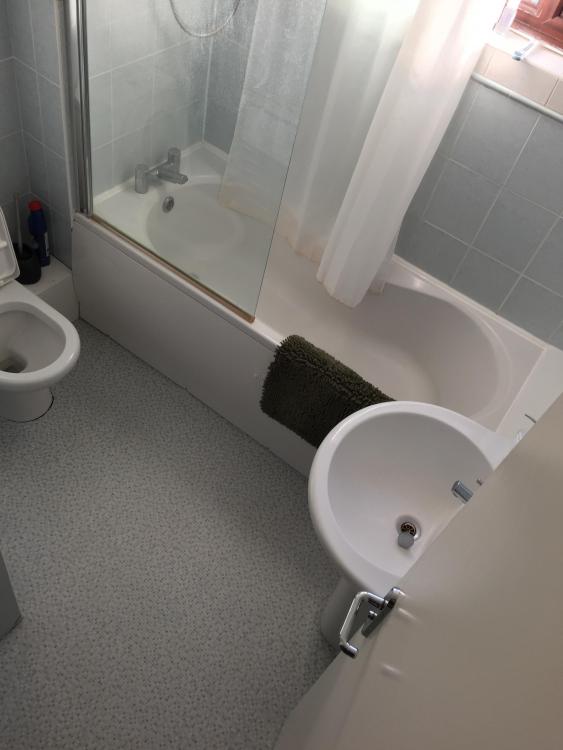
g000444555
Members-
Posts
12 -
Joined
-
Last visited
Recent Profile Visitors
The recent visitors block is disabled and is not being shown to other users.
g000444555's Achievements

Member (3/5)
2
Reputation
-
Bathroom floor tanking quote
g000444555 replied to g000444555's topic in Bathrooms, Ensuites & Wetrooms
I am thankful for all the comments above. However, this seems to be the best suggestion so far. -
Bathroom floor tanking quote
g000444555 replied to g000444555's topic in Bathrooms, Ensuites & Wetrooms
Yes I can. That is what I am doing now. However, if I have guests over, I don't want to be worried about such concerns. A bathroom floor needs to be waterproof. I like the house to be there for me to use it and not the other way around. I appreciate utility over appearance. I think it is very clear WHAT I want to achieve. In fact the test to validate my spec is very simple: throw a bucket of water onto the floor, notice that it stays on the floor until I mop it off. When it comes to HOW though. That is completely outside of my comfort zone and I cannot know what is the best solution. I am relying on professional's opinion and am trying to verify that what they suggest makes sense by posting on forums like this. My understanding from the conversation above is that the quote is reasonable and the solution is also reasonable. Perhaps, compromising would not worth it as it would not solve the problem. -
Bathroom floor tanking quote
g000444555 replied to g000444555's topic in Bathrooms, Ensuites & Wetrooms
I think it's unlikely to be timber floorboards as it feels and looks like a unified surface. More likely it would be chipboard, plywood or OSB. However, I don't know and I guess the only way to find out is to scrape off the vinyl. The house is about 30 years old in one of the best areas and generally it's well-built and stylish. It has sophisticated architecture. I would imagine the materials to be on the higher end of the spectrum for that time. -
Bathroom floor tanking quote
g000444555 replied to g000444555's topic in Bathrooms, Ensuites & Wetrooms
Like I said, I am flexible about the solution and am unsure what is the best option. All I want is when the water is spilled outside of the bathtub and into the 150x200cm flooring area, for the water not to leak to under side of room. The bathtub itself is not leaking at all, any water dropped into the bathtub goes through the hose and does not leak at all. It is fine if the water stays on the floor without ending nowhere and creating a lake, as long as it is not leaking to the under floor. This is a two storey house. The bathroom is in the second floor. The floor under the vinyl must be timber if I am not mistaken. I think this is what the builder has in mind, however, I am reluctant to the risk of taking the bathtub off in order to apply the sealant underneath. Because, I am worried for the risk of the re-sealing to be of inferior quality than the existing. The existing bathtub is perfectly sealed, no leakage at all. I wonder if I should ask him to apply the tanking only to the flooring area and the edge of the bathtub, so that the bathtub remains untouched. -
Bathroom floor tanking quote
g000444555 replied to g000444555's topic in Bathrooms, Ensuites & Wetrooms
The quote is only for tanking, tiling and the materials (bath, taps, etc are excluded). I have a small bathroom, with a bathtub and an additional floor area of 150 x 200 cm. The floor is covered with vinyl mat. The corners are not sealed and if a bucket of water is thrown onto the floor it will leak to under side of room and all the way to the ground floor. I am looking to waterproof the bathroom floor area of 150 x 200 cm. I am not sure what would be the best solution, vinyl, rubber flooring, tiling or something else. The builder recommended tiling, probably because he is more familiar with it. Also, I am not sure whether adding a drain would make sense. -
I just received a quote for the tanking of my bathroom floor. The quote is 700-1000£ for the tanking and tiling (fitting + materials) of the floor, which is 150 x 200 cm in size (+bathtub). Does this sound reasonable? Would you recommend checking somewhere else? I am based in Milton Keynes.
-
Conservatory too hot and leaking
g000444555 replied to g000444555's topic in House Extensions & Conservatories
I don't think the concept of the conservatory has flaws in itself, rather, the flaws look more like the result of poor installation. And I have heard it before that most conservatories have problems, however, this is likely the consequence of hiring incompetent installers. I can easily see the conservatory becoming my absolute favourite part of the house, as long as the flaws are fixed. I am also thinking to add a drain on the floor and cover the floor with tiles, as opposite to the current wood-like flooring. -
Conservatory too hot and leaking
g000444555 replied to g000444555's topic in House Extensions & Conservatories
Thanks, these are great hints. I don't know how old the conservatory is, however, it looks very new, and I don't think it's older than 5-10 years. I observed the conservatory during the last rain, and it leaks in three places. It leaks in one of the sealing planks. It also leaks in the two corners that connect the conservatory with the building. While looking at the latter leakage I realised a somehow more severe problem. The rain gutter is leaking water into the wall, which then creeps into the conservatory. I think fixing the rain gutter is a more urgent problem because having water falling into the wall could damage the wall as well. I have a bit of acrophobia so I am not sure I am up for the task to fix/replace the rain gutters. On the other hand, I don't have too much trust to professionals either, because, they usually don't care much, which means hiring the wrong professional could make the problem even worse. For the conservatory leakage, I will follow the above advice and re-apply the sealings. To reduce overheating, I will install roof and side blinds: https://www.247blinds.co.uk/conservatory-blinds I like the option of the transparent roof, as it gives a very romantic view, especially during the night. -
Conservatory too hot and leaking
g000444555 replied to g000444555's topic in House Extensions & Conservatories
The entire conservatory (roof and sides) consists of double glazing glass. -
I have a couple of problems with my conservatory: The roof is leaking It is completely transparent, letting the sun in, and getting too hot especially in the summer My questions: What is the best option to tackle the above? How much would it cost? Would it be advisable to hire a professional or can it be done on my own?
-
How to waterproof bathroom floor 150 x 200 cm
g000444555 replied to g000444555's topic in Bathrooms, Ensuites & Wetrooms
Indeed, the bathroom floor does not have a drain. I suppose adding a drain to the floor would be much more expensive? Would it make sense for such conversion? The walls are tiled and perfectly waterproof. Only the small floor area is the problem (150 x 200 cm). With that being said, having the floor waterproof is much better than letting the water flaw into the ground floor. At least I will have the option to mop it and also the bathroom is well ventilated and on the sunny side so it gets dry very quickly even if there is a lake. Currently, it is quite a hassle having to put the (pictured) bath rug into the corner next to the bathtub just to make sure it will absorb and prevent water falling under the floor. Another question, can I apply the tanking directly on the bathroom floor (150 x 200 cm) covered with vinyl mat? Or do I need to scrape off the vinyl mat first? -
I have a small bathroom, with a bathtub and an additional floor area of 150 x 200 cm. The floor is covered with vinyl mat. The bathroom is located in the first floor. What is the best way to waterproof the bathroom floor area of 150 x 200 cm? Some additional notes: The corners are not sealed and if a bucket of water is thrown onto the floor it will leak down into the ground floor. I guess one improvement would be to apply a waterproof flooring sealant in the corners While searching for this subject, I also stumbled upon the concept of wet-rooms (https://www.designingbuildings.co.uk/wiki/Wet_room). What sort of flooring do these have?





